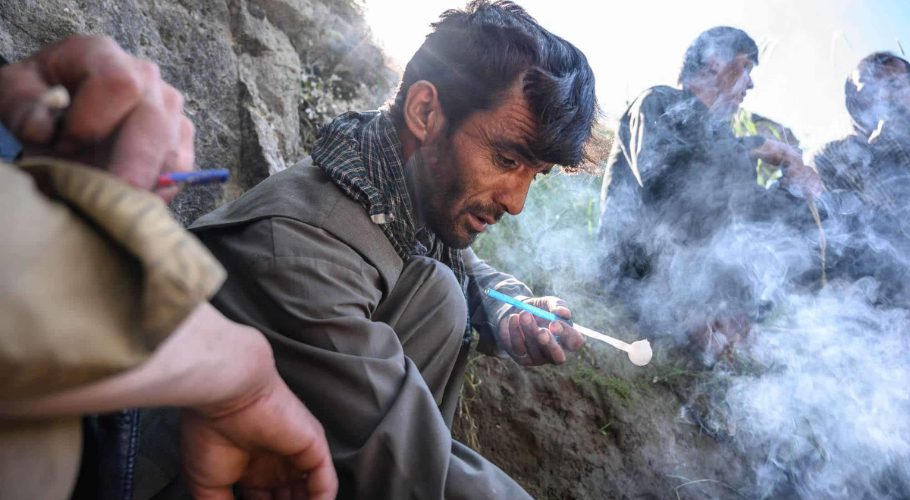NEW YORK: Afghanistan is the world’s fastest-growing maker of methamphetamine, a report from the United Nations drug agency said on Sunday.
The country is also a major opium producer and heroin source, even though the Taliban declared war on narcotics after they returned to power in August 2021.
The United Nations Office on Drugs and Crimes, which published the report, said meth in Afghanistan is mostly made from legally available substances or extracted from the ephedra plant, which grows in the wild.
The report called Afghanistan’s meth manufacturing a growing threat to national and regional health and security because it could disrupt the synthetic drug market and fuel addiction. It said seizures of meth suspected to have come from Afghanistan have been reported from the European Union and East Africa.
Methamphetamine trafficking in and around Afghanistan has surged in recent years, even as the Taliban has curbed heroin trafficking since taking power, the report said.
“The surge in methamphetamine trafficking in Afghanistan and the region suggests a significant shift in the illicit drug market and demands our immediate attention,” said Ghada Waly, executive director of the UNODC.
Taliban officials say its security forces are clamping down on Afghan poppy farmers and destroying crops. While heroin trafficking has slowed, the UNODC said in a statement, meth trafficking “has intensified since the ban”.
READ MORE: Opium cultivation soars in Afghanistan despite Taliban ban: UN
Meth seizures in and around Afghanistan jumped 12-fold in the five years through 2021. Between 2019 and 2022, nearby countries such as Iran and Pakistan also reported increased seizures.
Countries as far away as France and Australia have reported seizing methamphetamine that likely originated in Afghanistan, it said.
The UNODC said much of the meth from Afghanistan was made with pre-cursor ingredients such as those found in some cold and flu medication.
Afghanistan is home to the ephedra plant, which can be used to make methamphetamine, but the UNODC said the quantities needed to produce the drug and the risk of unreliable crops meant that Afghanistan’s production did not depend on the plant alone.
“Common cold medications and industrial-grade chemicals are more efficient and cost effective for the manufacture of methamphetamine and thus pose a far bigger threat,” the UNODC said.



































